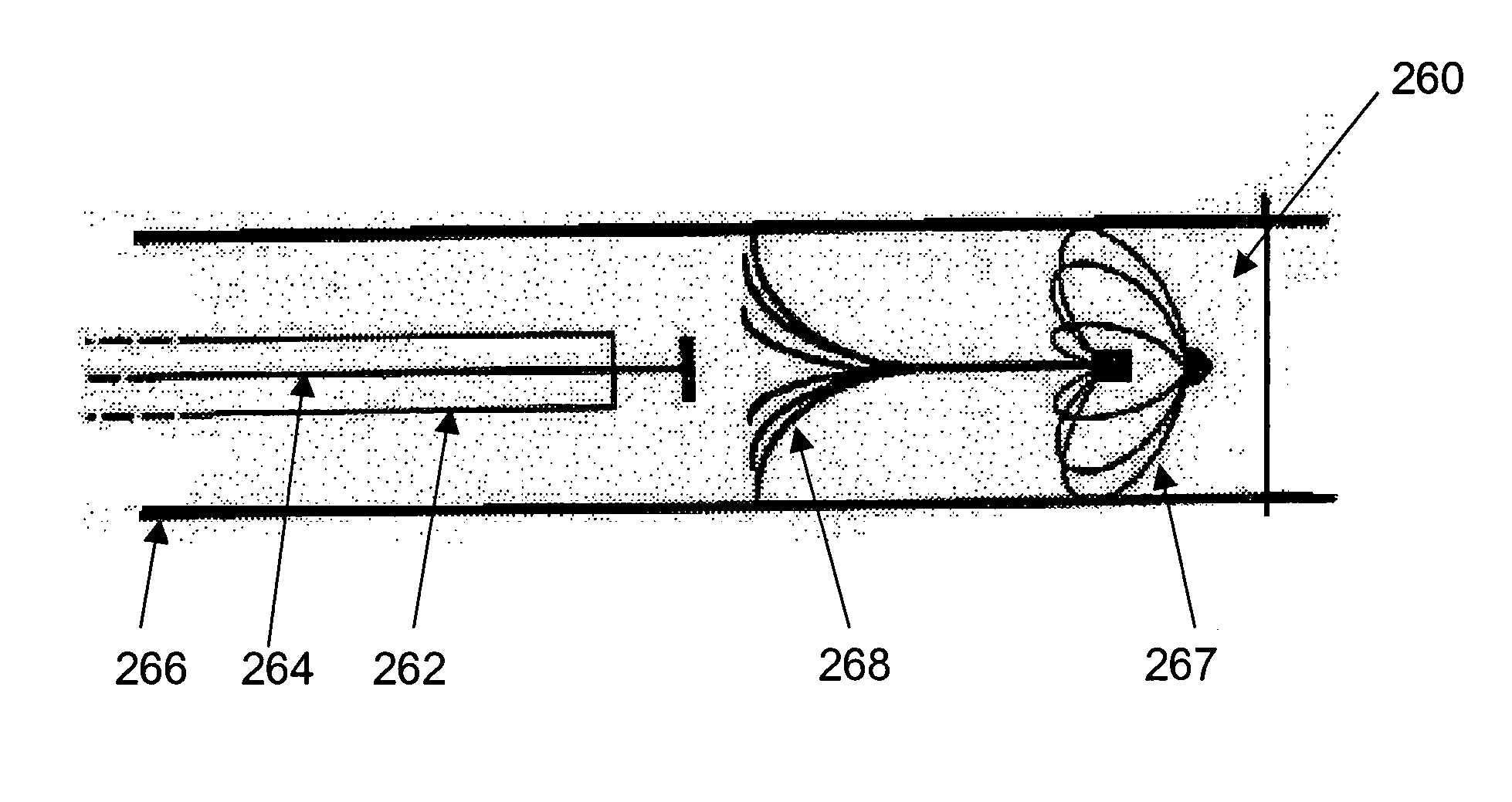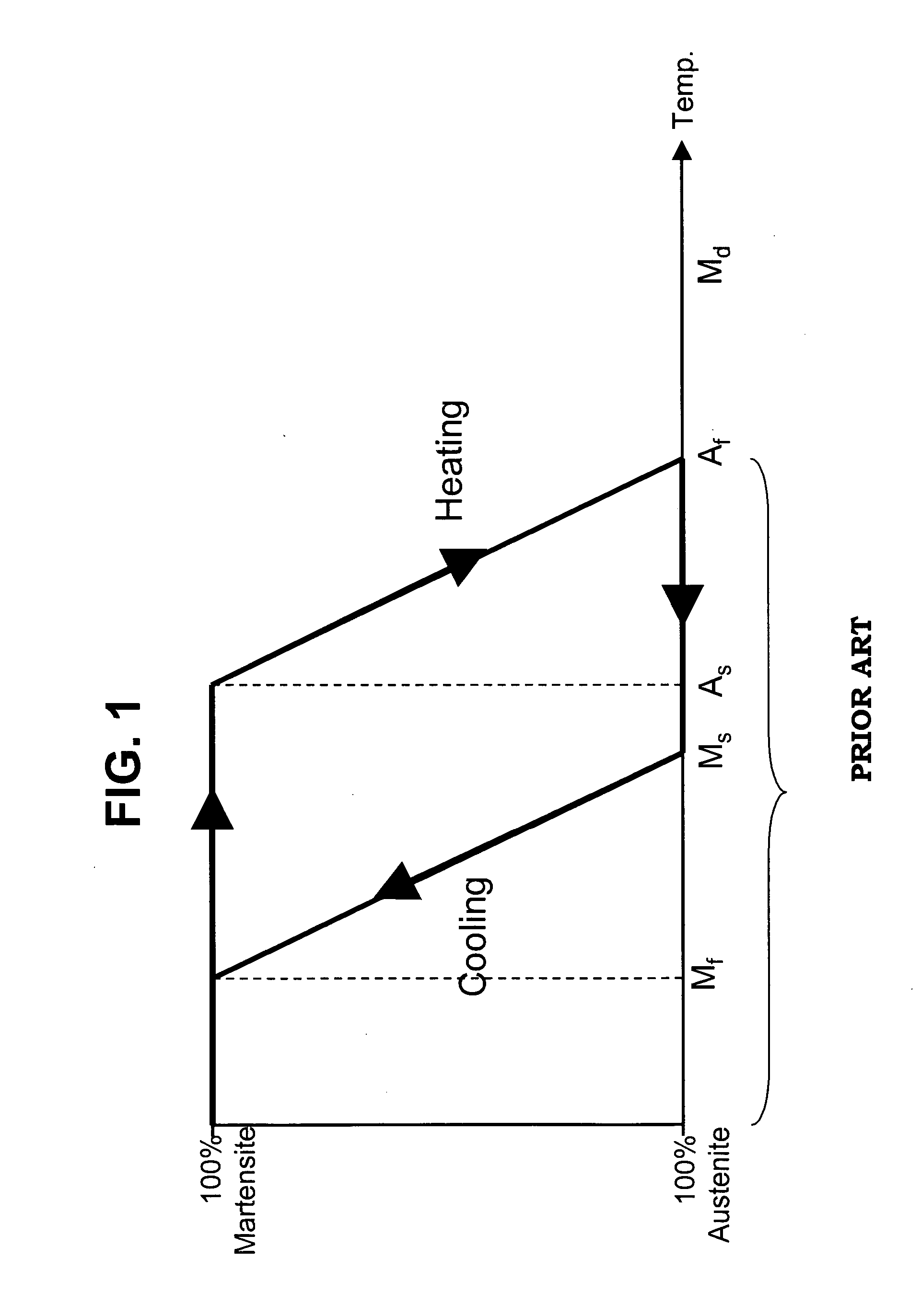Medical devices formed from shape memory alloys displaying a stress-retained martensitic state and method for use thereof
a technology of shape memory and martensitic state, which is applied in the field of medical devices, can solve the problems of difficult installation into the restraining catheter, the risk of human tissue damage, and the use of devices based on the sm
- Summary
- Abstract
- Description
- Claims
- Application Information
AI Technical Summary
Benefits of technology
Problems solved by technology
Method used
Image
Examples
Embodiment Construction
[0097] The present invention inter alia teaches a method for using a device, typically a medical device, formed, at least in part, from a shape memory alloy. The method makes use of an effect referred to herein as the superelastic plasticity (SEP) effect. The operative phase responsible for this effect is herein referred to as stress-retained martensite (SRM). As will be clear from the discussion below, using the SEP effect based on SRM in medical devices, for example, has distinct advantages over devices using solely the SME (FIGS. 3A and 3B discussed above and FIG. 7 discussed below) and the SE effect (FIG. 5). The SEP effect (and SRM on which it is based), medical devices using this effect, and a method for using SMA devices employing this effect are the basis of the invention described below.
[0098] Reference is now made to FIG. 6, where the superelastic plasticity (SEP) effect relating to, for example, bone staples, bone anchors, expandable bone fasteners, stents, or anastomosi...
PUM
| Property | Measurement | Unit |
|---|---|---|
| stress | aaaaa | aaaaa |
| body temperature | aaaaa | aaaaa |
| Af temperature | aaaaa | aaaaa |
Abstract
Description
Claims
Application Information
 Login to View More
Login to View More - R&D
- Intellectual Property
- Life Sciences
- Materials
- Tech Scout
- Unparalleled Data Quality
- Higher Quality Content
- 60% Fewer Hallucinations
Browse by: Latest US Patents, China's latest patents, Technical Efficacy Thesaurus, Application Domain, Technology Topic, Popular Technical Reports.
© 2025 PatSnap. All rights reserved.Legal|Privacy policy|Modern Slavery Act Transparency Statement|Sitemap|About US| Contact US: help@patsnap.com



